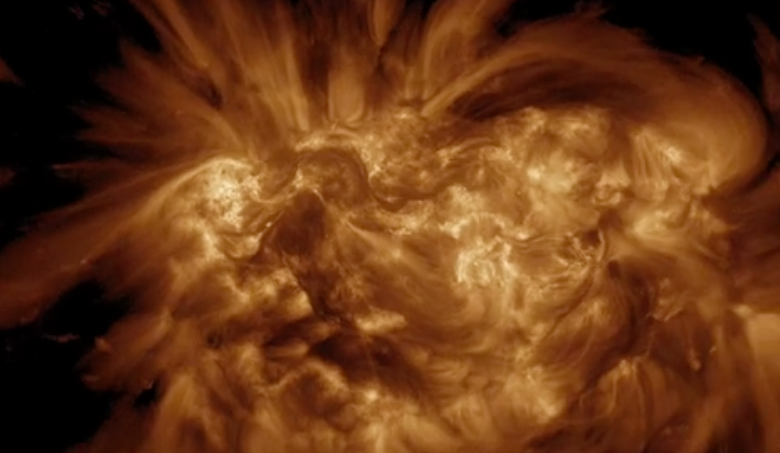Unraveling the mysteries of our nearest star, the Sun, is the goal of solar scientists around the world. Now, with the help of a rocket-borne camera launched recently by NASA, a team at Northumbria University, UK hopes that images with unprecedented clarity taken as part of the Hi-C mission, will reveal these answers sooner rather than later.
The High Resolution Coronal Imager or Hi-C for short, is on its third venture around the Sun and its mission is to help figure out one of the biggest questions in heliophysics – why the Sun’s atmosphere, or corona, is so much hotter than its surface. The Sun’s surface temperature is a lowly 6,000 degrees, but its corona is a whopping 1.5 million degrees and scientists don’t know why the temperature increases the more you move away from the surface.
During its first flight in July 2012, Hi-C captured the highest-resolution images ever taken of the solar corona to show previously unseen magnetic activity. It is thought that the Sun’s magnetic field plays a role in heating the gas in the atmosphere, which is often released into the solar system as hot winds that reach speeds of a million miles per hour. These space weather events, when directed at Earth, can affect not only just our weather but the solar flares can also disrupt radio, GPS communications and satellites that disseminate mobile phone signals.
After impressing NASA with his report on the findings of the 2012 mission, Dr Richard Morton, Senior Lecturer at Northumbria University, UK, was invited by the agency to analyse the latest pictures taken by Hi-C of the Sun. This latest batch has been taken of light at extreme ultraviolet wavelengths – a wavelength that enables better visibility of different gases at different temperatures within the corona.
Dr Morton explained: “These images taken of the Sun’s corona have the finest detail we have ever seen. Stars – of which the Sun is our closest – are a fundamental object of the universe. There are billions of them, and we don’t really know how they work, so this mission will give us information to deepen our understanding.
Dr Morton and his PhD student Ajay Tiwari now have six months to look at the new images and the data obtained during the latest mission to help resolve current questions about connections between the hot and cool regions of the solar atmosphere.
Their task will be aided by the addition of images taken with the Interface Region Imaging Spectrograph (IRIS), a NASA small explorer satellite observatory that captures data from the lowest part of the sun's atmosphere: the chromosphere, a turbulent interface region where much of the coronal heating begins.
“This is the first combined simultaneous dataset that covers the entire solar atmosphere (photosphere, chromosphere, transition region and corona) at sub-arcsecond resolution,” said principal investigator for IRIS and Hi-C co-investigator, Dr. Bart De Pontieu from Lockheed Martin Solar & Astrophysics Laboratory in Palo Alto, California.
“Understanding how the Sun works is important to everyday things we do on Earth,” added Amy Winebarger, principal investigator for the Hi-C mission at NASA’s Marshall Space Flight Center in Huntsville, Alabama. “By studying how the Sun releases bursts of energy, we hope to be able to better anticipate them and, in the future, design technology better equipped to withstand these disruptions.”











